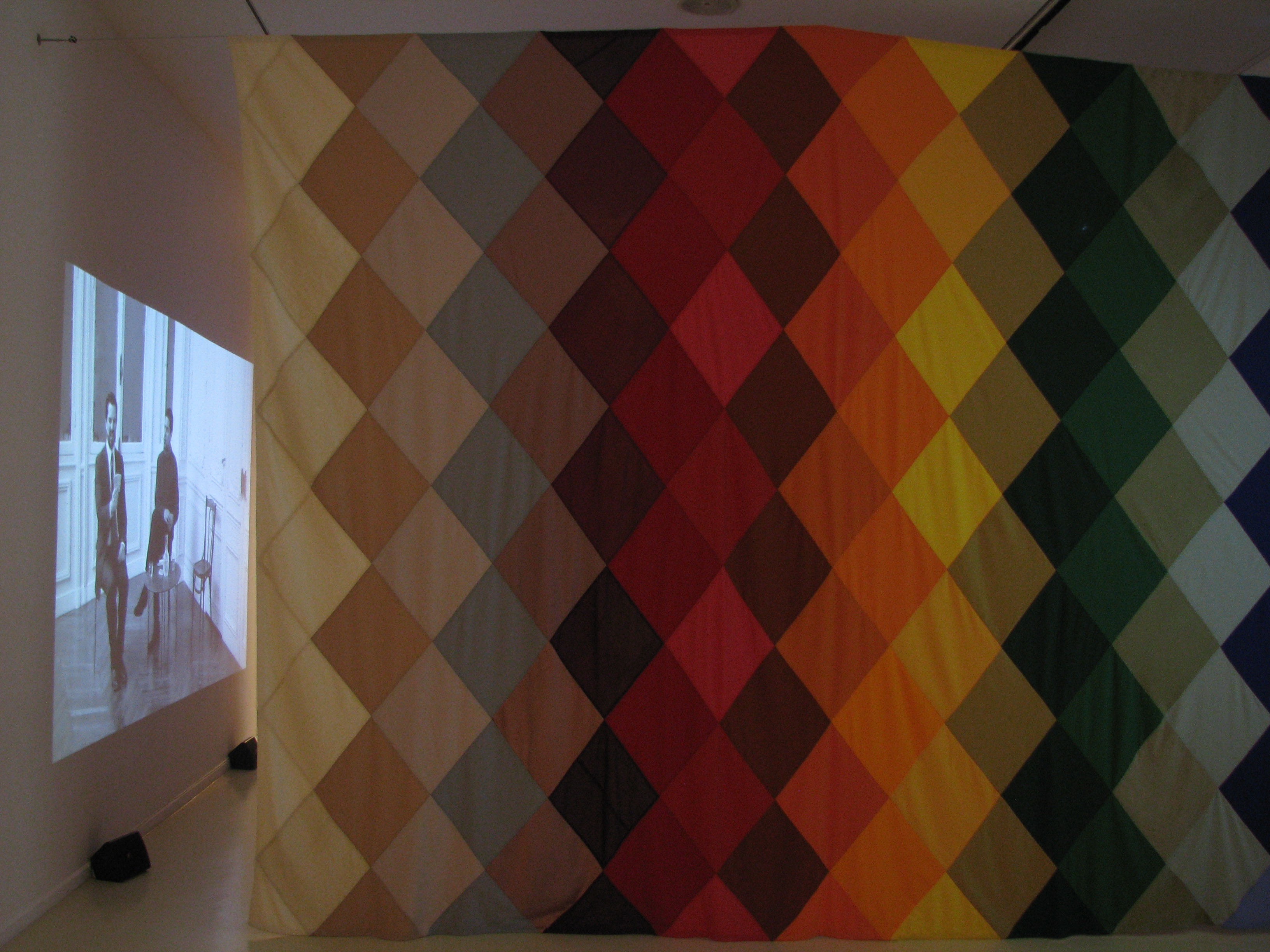Overview
Ulla von Brandenburg’s works are concerned with various models of theatricality. She works in a range of mediums, including installation art, performance art, theater, painting, video, set design, playwriting, and poetry. Her heterogeneous sources of inspiration include Baroque theater, Classical Greek theater, and epic theater, cinematic manipulations, and more.
The concept of ‘theatricality’ centers on the perceiving subject over the object – that is, the work of art itself. This form of viewing, which calls the observers’ awareness to the mechanisms of performance, preserves their aesthetic distance from the object, has been identified with voyeuristic, bourgeois forms of entertainment. By contrast, an experience of spectatorship that immerses the viewers in the performance unfolding onstage, and in which the dramatic elements are privileged over all other elements, is central to the history of theater; this form of experience has given rise both to positive ethical readings of the theater as a call to action, as well as negative readings that have pointed to the escapist and passive aspects of this mode of viewing.
Von Brandenburg’s art challenges this understanding of ‘theatricality.’ Her works relate to the law of three unities – the unity of time, space, and action – developed during the Renaissance – in order to endow the dramatic events unfolding onstage with a sense of credibility. At the same time, they borrow elements from the acting method developed by the playwright Bertolt Brecht, in which the actors remain estranged from the characters they play. Von Brandenburg’s works also include motifs from the world of Classical theater, which fosters a sense of identification with seemingly real characters and dramatic events, and motifs from the epic genre, which are designed to rupture the voyeuristic experience of the theater and to produce a sense of estrangement.
The artist simultaneously confronts the viewers with a number of contrasting elements. Yet in contrast to the conventions of epic theater, her work does not present a series of short scenes that each reveal a self-contained fragment of reality. Rather, it centers on a collection of gestures that all evolve at the same time and in the same place, and which appear to entertain a causal connection with one another, while in fact lacking any coherent internal connection. Von Brandenburg’s sets include symbolic elements, while the entire space is transformed into a symbolic arena. The actors in her works do not appear to identify with the characters they play in an ‘authentic’ manner, while the viewers are required to physically proceed along a trajectory that echoes the one followed by the theatrical characters.
The artist’s frequent use of fabrics, for instance, is related to the concept of the ‘fourth wall’ – a theatrical term pertaining to the imaginary wall separating the audience from the stage. Yet in contrast to the traditional use of the fourth wall, in which the viewers supposedly look through it, here the viewers find themselves on both sides of the wall – physically undermining the boundary between audience and stage, observer and participant.
Photos: Hayo Heye, Kunsthaus Hamburg 2013




